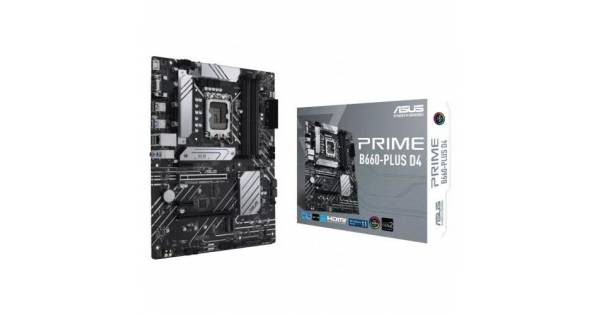
The ASUS PRIME B660-PLUS D4 is built for Intel’s 12th Gen Alder Lake processors, using the LGA 1700 socket. It supports up to 128GB of DDR4 RAM, with speeds of up to 5333 MHz when overclocked. The board includes a PCIe 5.0 x16 slot, allowing for high-performance GPUs, and two PCIe 3.0 slots for additional components.
For storage, the ASUS model features dual M.2 slots that support PCIe 4.0, ensuring fast NVMe SSD performance. While it doesn’t come with built-in Wi-Fi, it provides Ethernet connectivity, and for video, it includes USB 3.2 Gen 2 ports and an HDMI output. This board is designed for users who want a stable, future-proof build, but without advanced overclocking needs.
Gigabyte B550 GAMING X V2 Overview: Optimized for AMD Ryzen Builds
The Gigabyte B550 GAMING X V2 is an excellent choice for AMD Ryzen enthusiasts, supporting both the Ryzen 3000 and 5000 series processors through its AM4 socket. It supports up to 128GB of RAM, with speeds reaching 4733 MHz when overclocked. Like the ASUS board, it includes PCIe 4.0 x16 slots for your GPU and additional PCIe 3.0 slots for other expansions.
One M.2 slot supports PCIe 4.0, making it ideal for high-speed SSDs. It also offers plenty of USB 3.2 Gen 2 ports, HDMI, DisplayPort, and Gigabit Ethernet connectivity. While it lacks onboard Wi-Fi, its 8+2 phase VRM is a standout feature for users interested in overclocking, making it a solid option for gamers who want reliable performance with room to push their system.
Feature-by-Feature Comparison
- CPU Socket: The ASUS uses the LGA 1700 for Intel’s 12th Gen CPUs, while the Gigabyte board uses AM4 for AMD Ryzen processors.
- RAM Support: Both motherboards support up to 128GB of DDR4 memory, but ASUS edges ahead with faster overclocking capabilities (up to 5333 MHz vs. Gigabyte’s 4733 MHz).
- Expansion Slots and PCIe Support: The ASUS board offers PCIe 5.0 x16 slots, providing better future-proofing for newer GPUs, while Gigabyte sticks to PCIe 4.0, which is still more than enough for today’s needs.
- Connectivity and Ports: ASUS provides two USB 3.2 Gen 2 ports and HDMI output, while Gigabyte offers more USB 3.2 Gen 1 ports, making it a bit more versatile in terms of connectivity.
- Power Delivery and Overclocking: Gigabyte excels here with an 8+2 phase VRM, making it better suited for overclocking. ASUS is stable for regular use but not designed for extreme overclocking.
Which One Should You Choose?
If you’re building a PC based on Intel’s Alder Lake processors, the ASUS PRIME B660-PLUS D4 is the smarter choice. It’s future-proof with PCIe 5.0 support, offers faster RAM overclocking, and suits users who want stable performance without aggressive overclocking.
On the other hand, if you’re using AMD Ryzen CPUs and want the ability to overclock with ease, the Gigabyte B550 GAMING X V2 is the way to go. With its robust power delivery and support for PCIe 4.0, it’s a strong option for gamers and power users who need reliable performance and are okay with PCIe 4.0 for the foreseeable future.
Based out of Trenton, Henry MacDonald has been writing for Freeze Wall since 2018 and is presently our Managing Editor. An experienced freelance writer, Henry obtained an English BA from the New Jersey Institute of Technology, then spent over 8 years working in various markets as a television reporter, producer and news videographer. Henry is particularly interested in climate technology.






